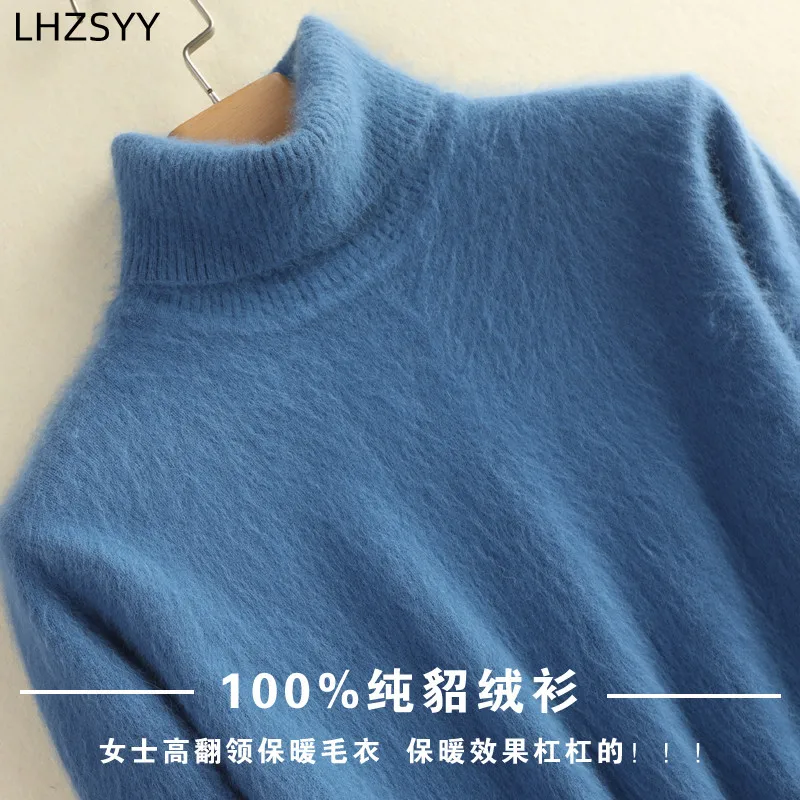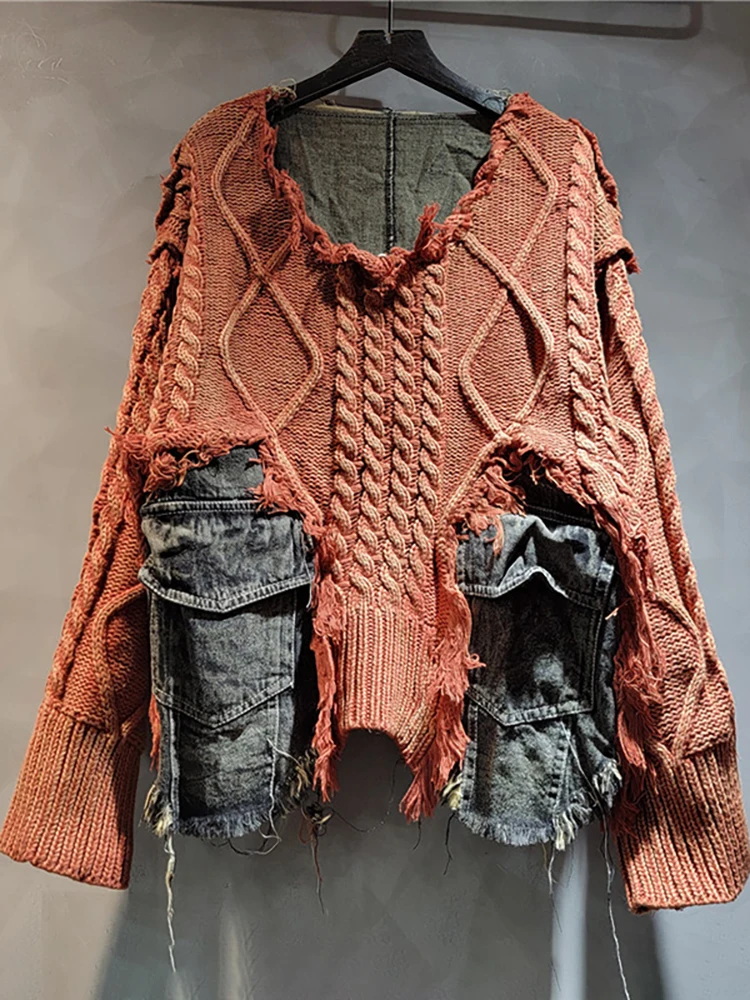Introduction: Decoding Cashmere Weight for the Discerning Buyer
When browsing through premium cashmere collections, you’ve likely encountered terms like “lightweight” and “heavyweight” cashmere. These distinctions aren’t simply marketing jargon—they represent meaningful differences that affect everything from a garment’s warmth to its drape, durability, and appropriate use.
Understanding cashmere weight classifications is essential for several reasons:
- It helps determine seasonal appropriateness and comfort
- It affects how the garment will drape on your body and maintain its shape
- It significantly impacts the price (with premium cashmere garments often ranging from $200-$800)
- It determines longevity and care requirements
- It guides proper layering potential
While all cashmere provides exceptional insulation at 1/3 the weight of wool, the differences between lightweight and heavyweight varieties can be substantial. In this comprehensive guide, we’ll explore the key metrics that define cashmere weight—gauge, ply, yarn fineness, and GSM—to help you make informed decisions when investing in comprehensive guide cashmere yarn weight garments.
Whether you’re building a capsule wardrobe or selecting a specific piece for a particular need, understanding these distinctions will ensure you select the perfect cashmere sweaters for your lifestyle.
What Is Cashmere? Understanding the Luxury Fiber
Cashmere is the downy undercoat harvested from Cashmere goats, primarily from high-altitude regions where these animals develop especially fine, insulating fibers to withstand harsh climates. This rare fiber is collected during the animals’ natural molting season, typically yielding just 150-200 grams of usable fiber per goat annually—explaining why genuine cashmere commands premium prices.
What makes cashmere so exceptional among fibers:
- Extraordinary softness due to its fine diameter (typically 14-16 microns in premium cashmere)
- Remarkable warmth-to-weight ratio (approximately 8 times warmer than sheep’s wool)
- Natural breathability that regulates temperature rather than simply insulating
- Exceptional longevity when properly cared for
- Natural elasticity that helps garments retain their shape
The finest cashmere comes from specific geographic regions, particularly Inner Mongolia, where climatic conditions produce the ideal combination of fiber fineness and length. Understanding these fundamental properties provides context for why weight variations matter so much in can sweater 100 percent cashmere garments and how they affect the wearing experience.
The Science of Cashmere Weight: Key Determining Factors
Multiple interrelated factors contribute to what we perceive as the “weight” of a cashmere garment. Rather than being determined by a single measurement, the overall weight and feel of cashmere results from a combination of technical specifications that work together to create the final product.
Understanding these factors not only helps you make more informed purchasing decisions but also explains why cashmere garments with seemingly similar appearances can vary so dramatically in price, performance, and feel. The following four key factors determine cashmere weight and will be explored in detail: gauge (knit density), ply (yarn strand count), yarn fineness, and GSM (the definitive weight measurement).
Each plays a crucial role in creating what we ultimately experience as 2 ply vs 4 ply cashmere guide garments of different weights.
Gauge (GG): Understanding Knit Density
Gauge, abbreviated as “GG” (gauge gauge), refers to the number of stitches per inch in knitted cashmere fabric. This measurement fundamentally determines how tightly or loosely the garment is knitted, directly affecting its weight, appearance, and performance.
The relationship between gauge number and weight is inverse:
– Higher gauge numbers (e.g., 12GG-16GG) = finer, lighter knit with more stitches per inch
– Lower gauge numbers (e.g., 3GG-7GG) = chunkier, heavier knit with fewer stitches per inch
Common gauge ranges and their characteristics:
| Gauge | Classification | Typical Features |
|---|---|---|
| 3-7GG | Low gauge/heavyweight | Chunky, textured, warm |
| 7-10GG | Medium gauge | Balanced weight and drape |
| 12-16GG+ | High gauge/lightweight | Fine, delicate, drapey |
The gauge dramatically affects how a garment looks and performs. For instance, a 7GG sweater creates that classic, substantial sweater feel perfect for traditional winter wear, while a 14GG piece feels whisper-light and is ideal for layering or warmer climates. The visual difference is also apparent—lower gauge creates more visible stitch definition and texture, while higher gauge produces a smoother, more refined surface.
Understanding fine heavy gauge cashmere distinctions helps explain why some garments appear deceptively simple yet command significantly different prices.
Ply: The Impact of Yarn Strand Count
Ply refers to the number of individual yarn strands twisted together to create the final yarn used in cashmere garments. This factor substantially affects weight, durability, and warmth.
Key points about cashmere ply:
- Single-ply (1-ply): A single strand of yarn creating lightweight, often softer garments with elegant drape but potentially less durability
- Two-ply (2-ply): Two strands twisted together, offering balanced weight, improved durability, and versatility
- Four-ply (4-ply) and higher: Multiple strands creating substantial, heavyweight garments with maximum warmth and durability
The impact of ply on garment performance is significant. While a 1-ply cashmere scarf might feel incredibly light and silky—perfect for transitional seasons or indoor wear—it may develop signs of wear after 1-2 seasons of regular use. In contrast, a well-made 2-ply garment often maintains its appearance for 5+ years, justifying its approximately 40-60% higher price.
Higher ply counts not only increase warmth but also improve resilience against pilling and everyday wear. They also create more substantial garments with a luxurious heft and drape that many cashmere connoisseurs specifically seek. The understanding cashmere ply thickness relationship is crucial for predicting how a garment will perform over time.
Yarn Fineness: The Micron Measurement
The diameter of individual cashmere fibers, measured in microns (one-millionth of a meter), plays a crucial role in determining both the weight and quality of cashmere garments. This measurement is inverse to quality—lower micron numbers indicate finer, softer, and generally more valuable fibers.
Premium Grade A cashmere typically ranges from 14-16 microns in diameter, whereas lower grades may measure 17-19 microns. For perspective, human hair averages 70-100 microns in diameter, highlighting just how extraordinarily fine quality cashmere fibers are.
The impact of fiber fineness on weight is subtle but significant. Finer fibers can be spun into yarns that achieve the same warmth with less weight, resulting in garments that feel incredibly light yet provide exceptional insulation. Each micron reduction below 16 dramatically increases both softness and price due to the rarity of such fine fibers.
Estate Cloth uses only Grade A cashmere with fibers under 16 microns thickness and exceeding 36mm length, ensuring an optimal balance between luxurious softness and practical durability regardless of the garment’s weight classification.
GSM: The Definitive Weight Measurement
GSM (grams per square meter) provides the most objective and definitive measurement of cashmere weight. While gauge and ply describe how the fabric is constructed, GSM measures the actual physical weight of the fabric, making it an excellent standard for comparison.
Common GSM ranges for cashmere garments:
| GSM Range | Classification | Typical Uses |
|---|---|---|
| 180-230 | Ultra-lightweight | Summer garments, lightweight scarves |
| 230-280 | Lightweight | Year-round wear, layering pieces |
| 280-330 | Medium weight | Standard sweaters, versatile pieces |
| 330-400+ | Heavyweight | Winter garments, outerwear |
The remarkable efficiency of cashmere becomes apparent when comparing GSM measurements across materials. A 400 GSM cashmere sweater provides approximately the same warmth as a 700 GSM wool sweater while feeling significantly lighter against the skin. This efficiency explains why even “heavyweight” cashmere maintains a relatively light feel compared to other winter materials.
GSM measurements help consumers understand exactly what they’re purchasing and make appropriate comparisons between different cashmere pieces—an especially valuable metric when shopping online where physical assessment isn’t possible.
Lightweight Cashmere: Features, Benefits, and Ideal Uses
Lightweight cashmere typically refers to garments with higher gauge numbers (12-16GG), fewer plies (usually 1-2 ply), and lower GSM measurements (180-280 GSM). These technical specifications create pieces with distinctive characteristics that make them ideal for specific uses and preferences.

Key characteristics of lightweight cashmere:
- Exceptional softness with a fluid, almost ethereal drape
- Remarkable breathability that prevents overheating
- Natural temperature regulation suitable for variable conditions
- Elegant, close-fitting silhouettes without bulk
- Effortless layering capability under jackets or other garments
Lightweight cashmere excels in versatile pieces like V-neck sweaters, cardigans, and wraps that transition between seasons. These pieces perform beautifully in temperatures from 50-70°F (10-21°C), or as layering pieces in colder conditions, making them ideal for office environments, travel, and transitional weather.
The delicate nature of lightweight cashmere often requires more frequent pilling removal and gentler handling, but many wearers find this trade-off worthwhile for the unparalleled comfort and versatility. The lightweight cashmere layers benefits extend beyond simple warmth to include adaptability across diverse settings and seasons.
For those seeking the perfect balance of refined elegance and practical versatility, cropped cashmere sweaters offer lightweight options that pair beautifully with both casual and formal outfits.
Heavyweight Cashmere: Features, Benefits, and Ideal Uses
Heavyweight cashmere typically features lower gauge numbers (3-7GG), higher ply counts (2+ ply), and higher GSM measurements (330-400+ GSM). These specifications create substantially different garments compared to their lightweight counterparts.
Key characteristics of heavyweight cashmere:
- Substantial feel with luxurious weight and presence
- Exceptional warmth suitable for winter conditions
- Structured drape that creates more defined silhouettes
- Superior durability with generally better resistance to pilling
- Impressive insulation even in harsh weather conditions
Heavyweight cashmere creates exceptional turtlenecks, cable-knit sweaters, and even outerwear pieces capable of replacing traditional wool coats. These garments provide comfortable wear in temperatures from 30-55°F (-1 to 13°C) without requiring multiple layers, making them ideal for winter wear.
Though typically 25-40% more expensive than lightweight alternatives due to the increased amount of raw material required, heavyweight cashmere often provides superior longevity with proper care. The investment perspective becomes important here—these pieces generally serve as wardrobe cornerstones for many years rather than seasonal purchases.
Many cashmere enthusiasts particularly appreciate the substantial feel and presence of heavyweight pieces, which offer a distinctly different wearing experience than lightweight options. For those seeking the ultimate winter luxury, cashmere turtlenecks in heavyweight constructions provide unmatched comfort and warmth.
Lightweight vs. Heavyweight Cashmere: Direct Comparison
When comparing lightweight and heavyweight cashmere, it’s important to understand that neither weight classification is inherently “better”—they simply serve different purposes and preferences. The following comprehensive comparison highlights the key differences to consider when making purchasing decisions.

| Feature | Lightweight Cashmere | Heavyweight Cashmere |
|---|---|---|
| Technical Specifications | ||
| Typical Gauge | Higher (12-16GG) | Lower (3-7GG) |
| Typical Ply | 1-ply, 2-ply | 2-ply, 4-ply, 6-ply+ |
| Typical GSM | 180-280 GSM | 330-400+ GSM |
| Performance | ||
| Warmth | Moderate, breathable | Exceptional, highly insulating |
| Durability | Good (better with 2-ply) | Excellent |
| Pilling Tendency | Moderate to high | Lower (especially multi-ply) |
| Experience | ||
| Feel/Touch | Delicate, fluid | Substantial, luxurious |
| Drape | Soft, flowing | Structured, rich |
| Visual Texture | Smooth, subtle | Pronounced, textural |
| Practical Aspects | ||
| Ideal Climate Use | 50-70°F (10-21°C) | 30-55°F (-1 to 13°C) |
| Layering Potential | Excellent | Limited (often outer layer) |
| Care Difficulty | Moderate | Easier (more robust) |
| Relative Price | Lower (less raw material) | Higher (more cashmere used) |
The most significant differences between lightweight and heavyweight cashmere emerge in their practical applications. Lightweight pieces excel in versatility and year-round wear, while heavyweight options provide unmatched warmth and presence. Understanding the art of cashmere thickness helps determine which weight better suits your specific needs and climate conditions.
Beyond Weight: Critical Quality Factors in Cashmere Selection
While weight is an important consideration when selecting cashmere, it represents just one dimension of overall quality. Several other critical factors determine the performance, longevity, and luxury of cashmere garments regardless of their weight classification.
Key quality factors beyond weight:
Fiber Length: Longer fibers (ideally exceeding 36mm) create stronger yarns with significantly less pilling. Premium cashmere typically features fibers exceeding 36mm in length, which substantially reduces pilling regardless of weight.
Fiber Diameter/Fineness: The micron measurement directly affects softness, with finer fibers (under 16 microns) providing superior hand-feel across all weight categories.
Origin and Sourcing Practices: The geographic origin and harvesting methods impact fiber quality. Ethically sourced cashmere from optimal climate regions generally yields superior fibers.
Manufacturing Quality: The spinning, knitting, and finishing processes dramatically affect performance. A well-constructed lightweight garment from quality materials will outperform a poorly-made heavyweight piece in both warmth and durability.
Quality Control Standards: Rigorous testing for pilling resistance, colorfastness, and dimensional stability indicates manufacturer commitment to quality. Look for transparency about fiber quality standards, such as using only Grade A cashmere with rigorous quality control.
These factors often explain the substantial price differences between seemingly similar cashmere garments. When evaluating options, particularly when comparing pieces of similar weights, these quality indicators become crucial for making informed investments. For examples of quality construction across weights, consider exploring cashmere cable knit sweaters which showcase craftsmanship in various weights.
How to Choose Between Lightweight and Heavyweight Cashmere
Selecting between lightweight and heavyweight cashmere becomes simpler with a structured decision framework focused on your specific needs and preferences.
Consider these key factors when making your selection:
Climate and Temperature Preferences: Your local climate and personal comfort level with temperature should guide your primary choice. Those in milder climates or who run warm may prefer lightweight options, while those in colder regions or who feel the cold easily will appreciate heavyweight pieces.
Intended Use and Occasions: Consider where and how you’ll wear the garment. For professional settings or frequent travel, lightweight versatility often proves more practical. For outdoor winter activities or formal winter events, heavyweight options provide better performance.
Layering Needs: If you prefer to layer multiple pieces, lightweight cashmere allows more comfortable combinations. For those who prefer single, substantial layers, heavyweight pieces eliminate the need for multiple garments.
Budget and Investment Perspective: Consider heavyweight cashmere as a long-term investment piece, while lightweight options offer more affordable entry points to luxury. The cost-per-wear calculation often favors quality pieces that align perfectly with your needs.
Styling Preferences: Lightweight cashmere excels in relaxed, casual silhouettes while heavyweight provides more structure for formal or tailored looks. Your personal aesthetic may naturally favor one weight category.
For those in variable climates, begin with a versatile 2-ply medium-weight cardigan that bridges seasons before expanding to more specialized lightweight or heavyweight pieces. The most satisfied cashmere owners typically understand choosing right cashmere yarn weight for their specific lifestyle needs.
Cashmere Wrap Sweaters, Women's Cashmere Pullovers
$75.89 Select options This product has multiple variants. The options may be chosen on the product pageCashmere Cable Knit Sweaters, Women's Cashmere Pullovers
Price range: $111.82 through $112.93 Select options This product has multiple variants. The options may be chosen on the product pageCropped Cashmere Sweaters, Women's Cashmere Pullovers
$155.77 Select options This product has multiple variants. The options may be chosen on the product pageOversized Cashmere Sweaters, Plus Size Cashmere Sweaters, Women's V-Neck Cashmere Sweaters
$136.87 Select options This product has multiple variants. The options may be chosen on the product page- Price range: $108.11 through $130.03 Select options This product has multiple variants. The options may be chosen on the product page
Striped Cashmere Sweaters, Women's Cashmere Pullovers
$139.68 Select options This product has multiple variants. The options may be chosen on the product page
Essential Care Tips for Cashmere of All Weights
Proper care significantly extends the life of both lightweight and heavyweight cashmere, protecting your investment and improving performance over time.

Universal care principles for all cashmere weights:
Washing: Always wash in lukewarm water (approximately 85°F/30°C) with pH-neutral soap designed for delicates. Hand washing is ideal, though some machine washing on dedicated wool/cashmere cycles is possible for certain pieces.
Drying: Never wring or twist cashmere when wet. Instead, gently press out excess water with a towel and dry flat on a fresh towel, reshaping to original dimensions. Keep away from direct heat and sunlight.
Storage: Store clean cashmere folded with acid-free tissue paper in breathable cotton bags or containers. Never hang cashmere as it will stretch over time. Always ensure garments are clean before storage to prevent moth damage.
Pilling Management: Expect natural pilling in the first few wears; this diminishes over time as shorter fibers work their way out of the fabric. Remove pills gently with a cashmere comb or dedicated sweater stone rather than pulling them.
Weight-specific considerations:
- Lightweight cashmere typically requires more frequent de-pilling during its break-in period
- Heavyweight cashmere may need longer drying times due to increased density
With proper care, quality cashmere improves with wear, developing a beautiful patina while maintaining its insulating properties. For detailed guidance on maintaining your cashmere’s appearance, explore our ultimate guide cashmere pill removal resources.
Is Cashmere Worth the Investment?
When considering the premium price of quality cashmere, many shoppers naturally question its value proposition compared to less expensive alternatives. This assessment becomes clearer when examining both the practical and experiential aspects of cashmere ownership.
From a cost-per-wear perspective, quality cashmere offers remarkable long-term value. A $300 cashmere sweater worn 30 times annually for 5 years costs just $2 per wear—less than many fast-fashion items that last a single season. With proper care, premium cashmere typically maintains its appearance and performance for 10+ years, further improving this value calculation.
Beyond economics, cashmere offers benefits that extend past mere functionality:
- Unmatched comfort: The combination of softness, lightweight warmth, and breathability creates a wearing experience no synthetic material can replicate
- Timeless appeal: Quality cashmere transcends seasonal trends, remaining relevant and appropriate year after year
- Sustainable potential: Investing in one high-quality, versatile cashmere piece rather than multiple disposable alternatives reduces environmental impact
- Emotional value: Many owners report genuine pleasure in wearing cashmere that increases over time as the garment molds to their body and lifestyle
Understanding weight classifications ensures you select the appropriate cashmere type for your specific needs, maximizing both practical performance and personal enjoyment. For those seeking timeless investment pieces, womens cashmere pullovers offer versatile options that complement diverse wardrobes.
Can You Layer Different Cashmere Weights?
One of the most creative aspects of understanding cashmere weight distinctions is the potential for sophisticated layering that maximizes both style and function. Combining lightweight and heavyweight cashmere creates depth, visual interest, and practical temperature regulation.
Effective cashmere layering strategies:
- Layer a 14GG lightweight cashmere tee under a 7GG cardigan for optimal temperature regulation without bulk—perfect for environments with variable temperatures
- Use lightweight cashmere as your base and mid-layers, with heavyweight pieces as striking outer layers that create dimensional texture
- During unpredictable spring weather, start with a lightweight foundation that can be supplemented with a heavyweight piece as needed
- Look for lightweight pieces with clean lines to pair under more textural heavyweight items for visual interest without adding unnecessary volume
This layering approach not only extends your cashmere wardrobe’s versatility but also creates distinctive looks that showcase your understanding of quality materials. The ability to layering lightweight cashmere year-round makes these pieces far more versatile than their seasonal counterparts.
By mastering both lightweight and heavyweight cashmere options and understanding their complementary nature, you transform individual garments into a sophisticated wardrobe system that adapts to both climate needs and style preferences throughout the year.







